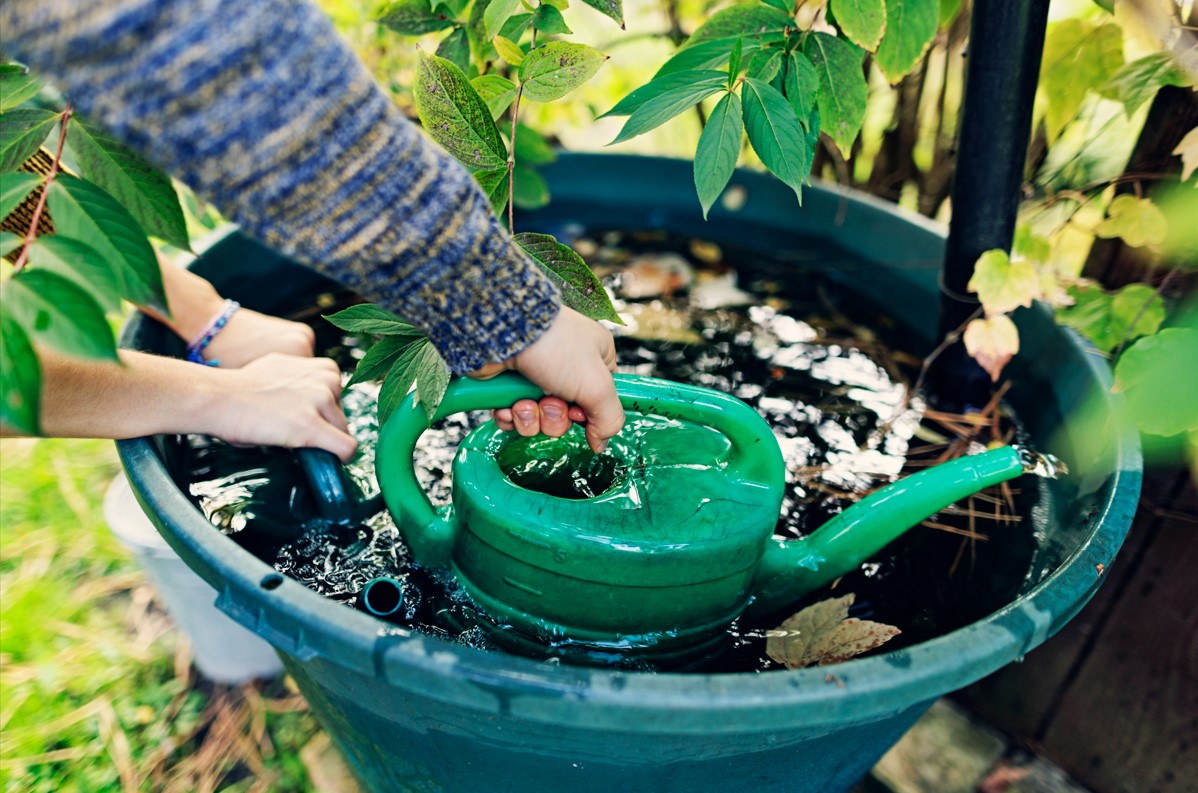
Easy ways to save water and make a big difference
It’s hard to imagine the UK, a nation surrounded by water and known for it’s wet weather, is water stressed. But with population growth and the effects of climate change, such as heatwaves and droughts, predicted to get worse we’re facing a water shortage by 2030.
It’s hard to imagine the UK, a nation surrounded by water and known for it’s wet weather, is water stressed. But with population growth and the effects of climate change, such as heatwaves and droughts, predicted to get worse we’re facing a water shortage by 2030.
Recent research by Kingfisher, which owns B&Q and Screwfix, supports this concluding that seven regions in England will face severe water stress by 2030, with the South of England expected to be the worst affected.
Despite the 2022 drought and recent extended hosepipe bans being a stark example of this, Brits significantly underestimate how much water they use per day, and don’t view water as the precious resource that is is. We all need to save water and fortunately just a few small changes to our daily routines can make a big difference quickly, and also can save you money!
Whilst our water sources are currently in a much stronger position than they were this time last year when we introduced our hosepipe ban in Hampshire, our unpredictable weather patterns means making these changes now will help reduce the risk of needing to introduce restrictions later this year and beyond.
Here are just a few you ways you can save a little water and make a lot of difference.
Keep your showers under 4 minutes
Depending on the type of shower you have, a ten-minute shower can use up to 150 litres of water. Let’s say four people in a household each enjoy one ten-minute shower every day... That’s more than 200,000 litres of water used each year from the shower alone (equivalent to over three swimming pools!).
Reducing shower time to four minutes instead of ten could save over a whopping 130,000 litres of water annually. Those who want to go the extra mile can install a water-saving showerhead to elevate their conservation efforts even more.
Only turn the dishwasher on when it’s full
While a handy appliance that many of us couldn’t dream of living without, putting the dishwasher on every day or even multiple times a day can use up a lot of water. Make sure to only use your dishwasher when it’s full. Cutting even one cycle a week can save 14 litres of water.
Turn the tap off when brushing your teeth
How many of us are guilty of letting the bathroom tap run while we brush our teeth? Come on, we’ve all done it! The time to stop doing it, however, was yesterday. By turning off the tap while we scrub, brush, and rinse, we can save up to 12 litres of water every single time.
There’s no need to wet your toothbrush multiple times, once before applying the toothpaste and once after. Instead, only wet your toothbrush after the toothpaste has been applied. That way you’ll make sure your toothpaste won’t fall off and you’re conserving some water too!
Install a water butt
Us Brits are no strangers to rain, and a water butt helps to store rainwater so you can use it for other activities. When it rains the water is caught in a drainpipe and flows into the water butt, ready to be reused.
A standard water butt can hold up to 200 litres of water to use around your garden, and prices start from just £35.00 on Amazon. Meanwhile, some of our customers who are lucky enough to live in areas of the Isle of Wight and Whitstable are actually being offered free water butts as part of a special project to help slow the amount of rain entering the sewer network in one go.
Check your loo for leaks
Your toilet might be costing you a lot in water usage – and not from all the flushing. If your toilet is leaking water from the cistern into the pan, your water bill will be sky high and your conservation efforts will be for nought.
In fact, a leaky toilet could waste around 200–400 litres of water a day. As such, it’s best to check to see if you have a leaking toilet cistern. To do this, you could place a few drops – 10-15 will do – of food colouring into your toilet cistern. After 10 minutes, check your bowl. If there is any coloured water visible, your toilet is leaking and will need to be repaired.
Think before you throw water down the drain!
Make sure to use water you collect in the following ways to benefit your household and the environment:
Rinsing vegetables – When you’re prepping your next meal, you’re going to need to use some fresh water to clean your ingredients. Place a bowl under your tap to collect the water and use it to water your garden.
Boiling ingredients – When boiling ingredients such as chicken and vegetables the worst thing you can do is throw away all your excess water. Instead, collect the water once it has been infused with the flavourful ingredients and use it as stock for your broths, soups, smoothies and more.
